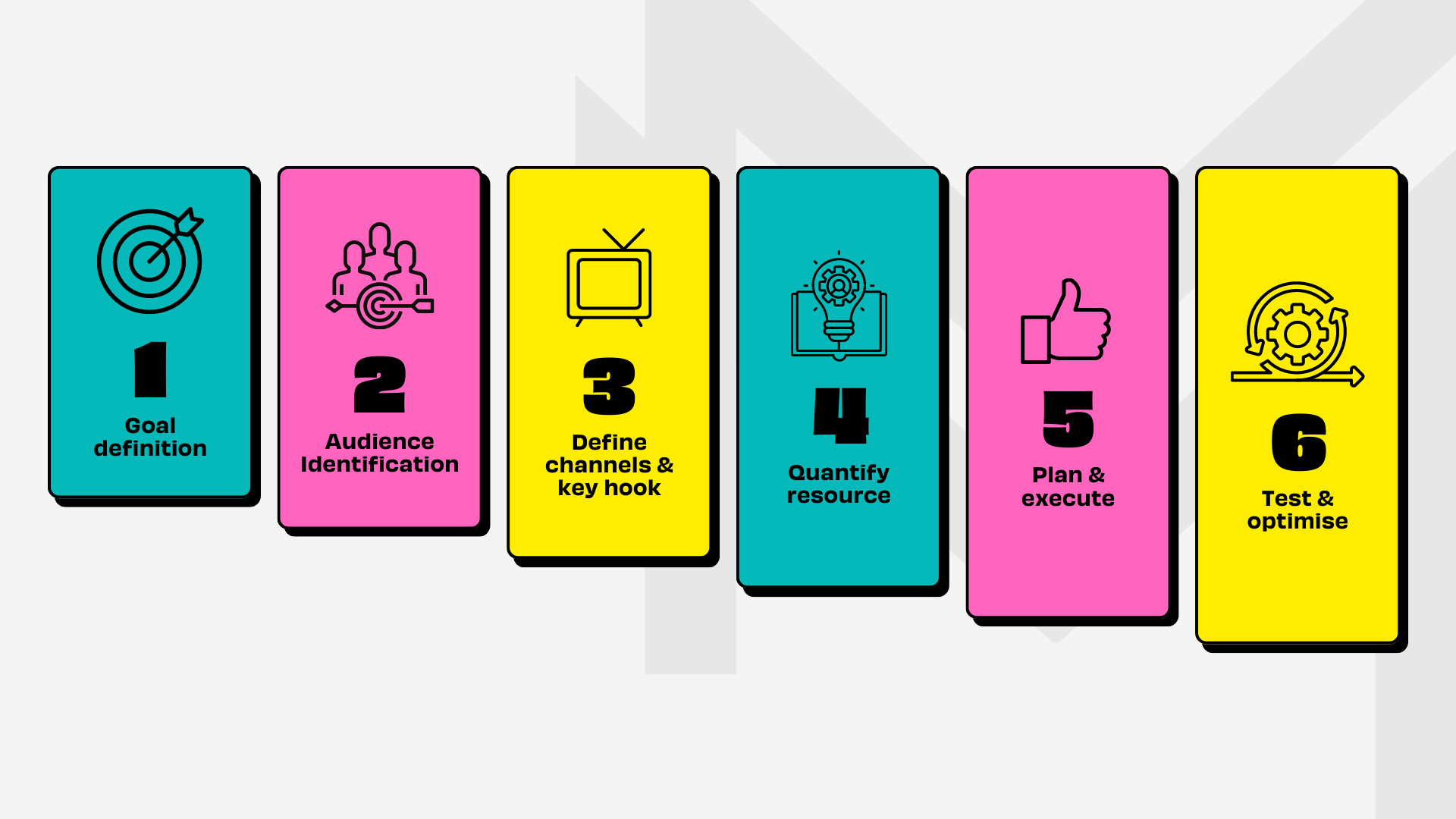want some cookies?
We use cookies to make your browsing experience amazing.

When we think about storytelling, our minds often wander back to a time of childhood bliss. We might think of Disney, or the stories our parents told us. But what we often overlook is that storytelling is all around us. It's part of our everyday lives - yes, even as adults. Sometimes it's obvious, such as a TV series or a film. But other times it’s not. How we relay the happenings of our day to our partner, how we daydream about our future, and even how we build emotional connections with the world around us. These are all storytelling in action.
In fact, a 1940's experiment proved that humans use stories to rationalise the things they see. Using a simple video of shapes moving on a screen, psychologists Heider and Simmel asked people to describe what was happening. Almost all participants gave the shapes personalities, emotions and motivations. (You can check out the video here, if you’re interested!) And it's this emotional connection that we want to tap into with our marketing for learning campaigns.
The power of emotion in marketing
What's a marketing professional’s primary aim? Those without a deep understanding of marketing will often jump to the conclusion that it's to make people buy something. Which isn't completely incorrect. But marketing is much more than that.
Effective marketing does three things:
- Captures attention
- Educates
- Prompts action
For example, the marketing team at Innocent Smoothies...
- Grab attention through witty social media posts
- Educate us on the goodness in their smoothies through their website & packaging
- Encourage us to buy the smoothie!
It's a winning recipe. But how does it work when we're looking at marketing for learning? Well, we want to:
- Grab the attention of our people (they're very time-poor, so this is a challenge in itself!)
- Educate them on why they need to embark on the learning we're offering them
- Encourage them to sign up for training or log in to our learning platform so that they can access the amazing resources we have for them.
But we live in an attention economy. Cutting through the noise is a tough job, especially as our people don’t necessarily want to learn. And we’re asking them to give up something more precious than money, their time. Which is where storytelling - and the emotional connection it forms - comes into play, through learning campaigns.
Wait, what is a learning campaign?

“Build it and they will come” is one of the most disastrous phrases in business - especially when it comes to learning. No matter how fantastic your content is, if your people don’t know it exists, how can they engage with it? That’s where a learning campaign steps in. Learning campaigns, with marketing at their core, ensure engagement with your content and resources and ultimately drive impact. Which I’m sure you’ll agree - is a very crucial step in learning.
But we’re seeing the phrase ‘learning campaign’ used incorrectly quite often lately. Or perhaps these people are just trying to describe something else entirely… But here at MAAS, we want to clear up the confusion about learning campaigns. This image gives you a quick overview of what’s included in a campaign. It’s about exploring what’s in it for your people, what will they take away from engaging with your learning? Then telling them the answer to that question by tapping into their emotional drivers - which will ultimately make them take action. Simple, right?!
It’s in the ‘tapping into their emotional drivers’ phase that storytelling comes into play. It’s this stage that prompts your people to engage with your learning, which is our primary aim, right?
Using storytelling in learning campaigns to personalise
Good marketing persuades an individual that your product or service will have the power to change their life, without talking to them one-to-one at all. As marketers, we create messaging, adverts, emails and so on, that go out en masse. But when it hits someone’s inbox, it should feel as though it’s entirely bespoke and personalised to their needs.
It’s a tough feat, but storytelling can help. Stories allow you to convey a message for interpretation. Take the ‘Lynx effect’ advert for the popular antiperspirant range. They never mention that Lynx smells good - they leave that open for interpretation. Their target audience could watch the video and interpret it in any way they wanted: Lynx spray makes you irresistible. Lynx spray attracts the opposite sex. Or they might get it ‘right’... Lynx spray smells good.
This was such a strong story for the brand that there has been scientific research into ‘the Lynx effect’ and the phrase ‘the Lynx effect’ is still on Urban Dictionary - five years after the brand ditched the campaign. Though the story it tells may be questionable in today’s age (and that’s why the brand rightly ditched it a few years back), the power of storytelling cannot be overlooked. It told it’s target audience that if they used its product, their life would change for the better. It made it personal and made the target audience the protagonist of the story.
This is actually often much easier in the case of learning. Your learning resources will teach your people a new skill, behaviour or way of thinking that they didn’t have before. Which will then positively impact their personal or professional lives. In our marketing for learning advertising - we must tap into that need, and convince our people that the learning we’re offering will help them get to their aspirational goal.
Using storytelling in learning campaigns to create compassion
Whether you’re a marketing pro or not, I bet you spend time each year discussing at least one advert: The John Lewis Christmas ad.
From their 2015 team-up with Age UK for the ‘man on the moon’ advert, to 2019’s ‘excitable Edgar’; the John Lewis Christmas advert always sparks emotion. It made the audience care so much about the elderly at Christmas time, that within a week thousands had signed up to volunteer with Age UK. And it made fully grown adults buy stuffed toys of a dragon because they loved him so much. But most importantly for the marketing team behind these tactics, it increased brand awareness.
When it comes to marketing with a much smaller budget than the likes of John Lewis; brand awareness is equally as important. Take marketing your latest eLearning course as an example, you may not realise it, but learners ‘buying’ your course takes a huge amount of trust. Despite the fact that they often aren’t parting with their hard-earned cash at all. In a world where everyone comments on how busy they are, attempting to persuade learners to embark on another task isn’t a challenge for the faint hearted. Make your learners care about your learning brand, the purpose behind the training, and the impact it’ll have on their lives, and your job will become much easier.
Using storytelling in learning campaigns to explain
I consider myself quite ‘tech-savvy’. However if you ask me to explain how algorithms work in social media - you’d have me stumped. Well, that was the case until recently, when I watched Netflix’s documentary-drama, The Social Dilemma. The fact that this release isn’t a straight-laced documentary, nor is it a drama, is the reason it told such a good story. The production team used actors to depict an algorithm controlling somebody’s social media usage. It made the explanation of how an algorithm works relatable, realistic - and most of all, it aided understanding. Alongside this it humanised the algorithm as three people, all making decisions about which alert to send to an individual's phone next.
Despite years of reading about social media and how algorithms control who sees what, I never really understood it. I knew it was the tech behind the communication platforms, but that was about it. But in 90 minutes, this documentary-drama made it all make sense. A light bulb went off in my mind, “ohhhhh, that’s what all of those articles meant”.
This is perhaps the most common use of storytelling in learning. Many of the best learning development companies use storytelling throughout their courses, modules and learning programmes to aid learning. But how do we use it to market our learning? By using storytelling throughout our learning campaigns, we can depict to our learners how our content will improve their lives, without leaving too much to the imagination.
How storytelling in learning campaigns can help drive engagement
L&D professionals often say their biggest challenge is engagement. But I don’t think that’s the case. I think the biggest challenge for L&D is awareness. Because if people don’t realise something exists, how can they engage with it? And because L&D is framing this problem wrong (focusing on engagement rather than awareness), practitioners find themselves focusing on the content: What are we teaching? Is it relevant? How can we make it more ‘fun’? But making changes based on any of these questions is not going to make the impact we want - because they overlook generating awareness of the learning offering.
Until you make your learner aware, care and understand why the learning is important to them (not the business!) you’ll struggle to truly overcome the age-old engagement problem. Instead, create a learning campaign that tells a story to inspire your learners and creates excitement about the possibilities they will have post-learning and you’ll be on your way to combating poor learner engagement, once and for all.









